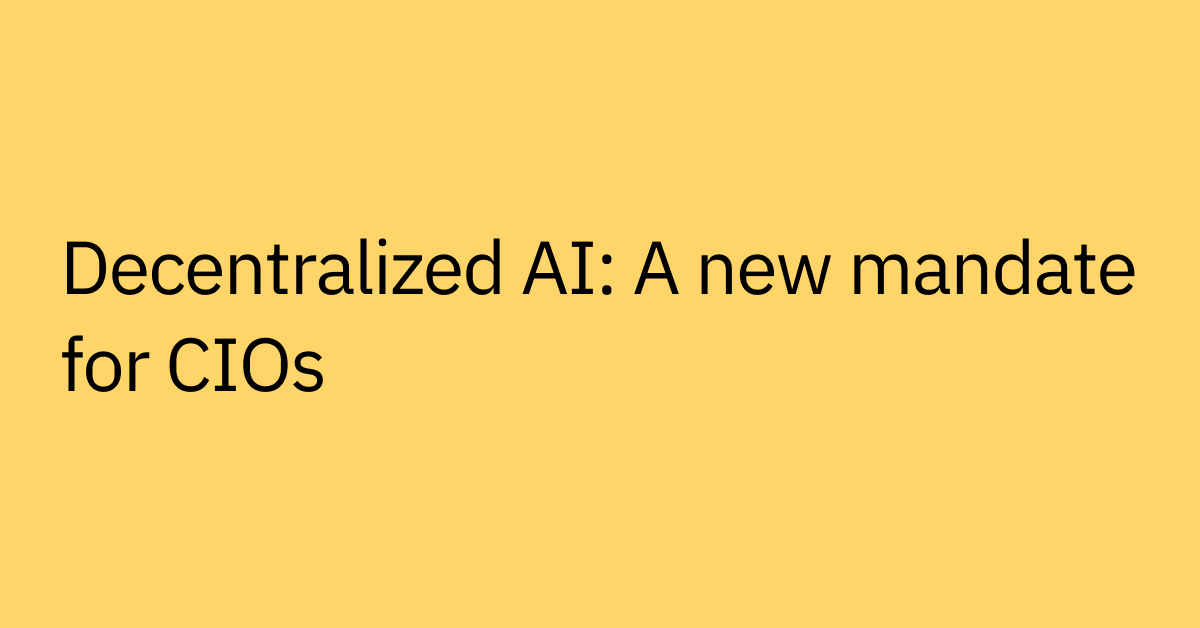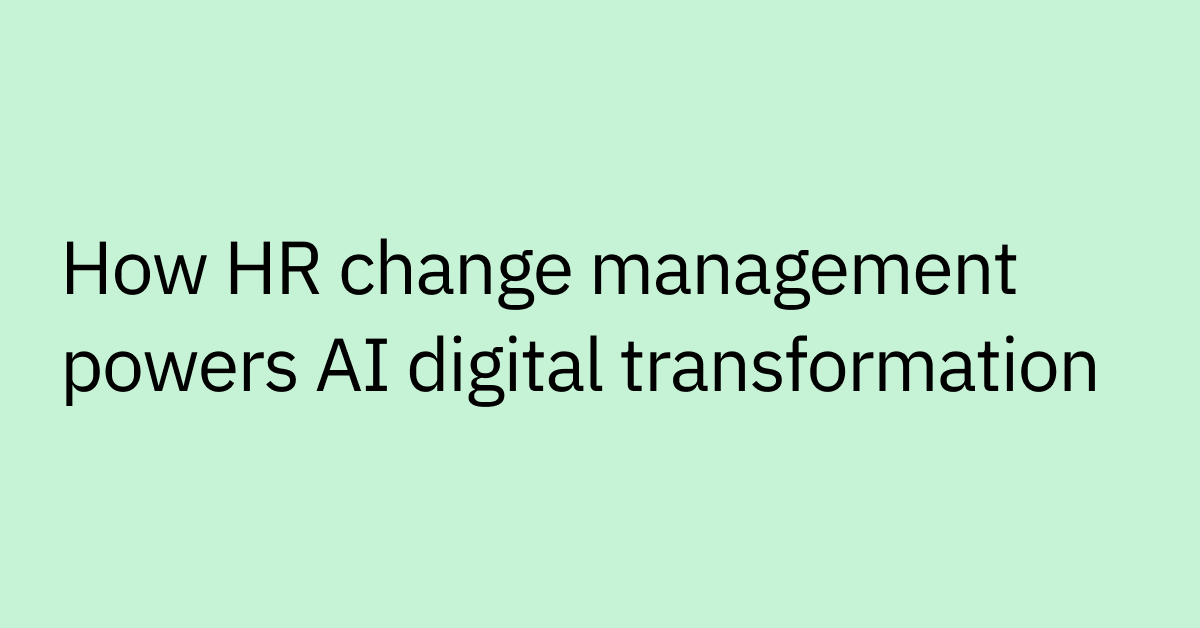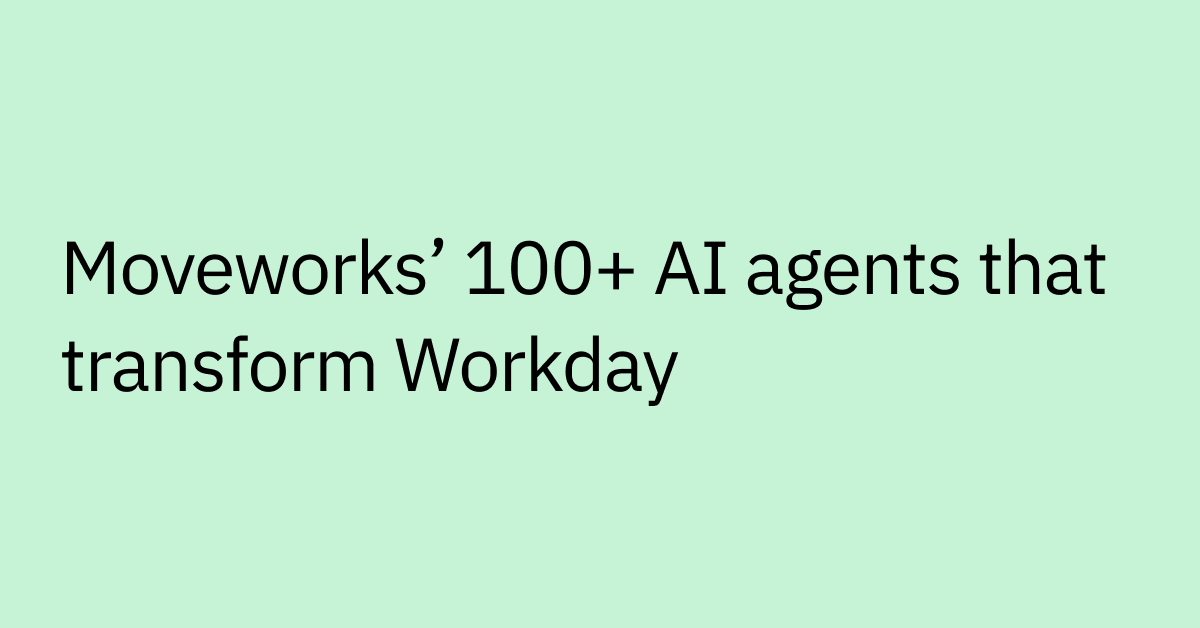Table of contents
Highlights
- Employee experience directly impacts business outcomes—companies with engaged employees report higher profitability and productivity.
- Traditional quarterly surveys and annual reviews miss active pain points that derail productivity daily.
- Agentic AI can transform employee experience measurement from reactive reporting to proactive issue resolution.
- Real-time monitoring across IT, HR, and business systems helps reveal patterns invisible to manual processes.
- Automated feedback loops can enable continuous improvement without overwhelming support teams.
Are you losing top talent to frustrating workflow problems? Watching productivity stall while employees struggle with basic IT issues like password resets and system access? Feeling like your company culture initiatives aren’t actually doing anything for the culture?
Despite massive investments in employee experience, only 31% of employees report feeling truly engaged at work. These efforts clearly aren’t working, but why not?
It’s typically not from lack of investment—it’s from lack of visibility. Most organizations still measure employee experience through lagging indicators like annual surveys and exit interviews, which only capture problems after the damage is done.
Many organizations still measure employee experience (i.e. the sum of all interactions an employee has with their organization) through annual surveys and exit interviews. But by then, the damage is done. High performers have checked out as everyday pain points accumulate, resulting in major productivity losses due to burnout.
AI-powered measurement systems can actually capture overall employee experience signals in real time and help identify root causes so you can take a proactive approach to EX and help to stop small issues from becoming big problems.
Rather than replacing human judgment with algorithms, AI can give HR teams and IT leaders the data they need to make informed decisions and the automation to quickly act on insights.
Why measuring employee experience is a business imperative
Employee experience takes into account every interaction someone has with your organization, from their first interview to their last day. It includes how quickly they get system access, how easily they find information, and how supported they feel when issues come up.
The traditional approach treats employee experience as a "nice-to-have" that’s measured through periodic surveys. But forward-thinking organizations recognize it as an actual business driver.
Studies continue to show that when employees have transparent access to tools and information, they’re more engaged and able to spend more time on strategic work and less time wrestling with technology.
Companies with engaged employees also report experiencing a 14% increase in productivity. That means if your organization has 1,000 employees, improving engagement through better experiences could be equivalent to adding 140 productive team members without added hiring costs, training overhead, or office space requirements.
The stakes are especially high, given this link to productivity and profitability.Meanwhile, poor IT support experiences can lead to shadow IT workarounds, creating security risks and compliance concerns.
Benefits of measuring and improving employee experience with AI
When HR and IT leaders can measure employee experience in real time, they gain the data to fix what’s slowing their people down. With clear visibility into friction points across systems and teams, leaders can make targeted improvements that drive measurable business outcomes—no surveys, no guesswork.
Higher productivity: Continuous insights into how employees interact with tools, systems, and processes help leaders remove blockers before they compound. The result: faster workflows, fewer delays, and teams that stay in motion.
Greater visibility: AI-powered measurement surfaces patterns invisible to traditional feedback loops—like where support bottlenecks form or which processes create the most friction. That data helps teams prioritize fixes that deliver real ROI.
Improved culture and engagement: When employees can actually get work done without constant roadblocks, morale rises. Leaders see higher engagement and stronger alignment across departments—without adding headcount.
Operational efficiency at scale: Automated measurement eliminates the manual effort of gathering and interpreting employee friction points and feedback. Instead of reactive support, HR and IT teams can focus on proactive improvements that drive performance across the organization.
Key metrics and KPIs to track employee experience
To measure employee experience effectively, you’ll need to track both traditional sentiment indicators and operational signals that reveal the challenges your team is facing in real time.
Employee net promoter score (eNPS) or employee sentiment
Employee net promoter score measures how likely employees are to recommend your organization as a place to work. The standard question asks: "On a scale of 0–10, how likely are you to recommend [Your Company Name] as a place to work?"
Responses are categorized into three groups:
- Promoters (9–10): Highly engaged employees who actively advocate for your company
- Passives (7–8): Satisfied, but not enthusiastic employees
- Detractors (0–6): Disengaged employees who may actively discourage others
Your eNPS score equals the percentage of promoters minus the percentage of detractors:
eNPS = % promoters − % detractors
While eNPS provides valuable directional insight, it works best when combined with data that tells the story (the "why?") behind the scores, like sentiment. AI uses natural language processing (NLP) to analyze sentiment and communication patterns in surveys, support conversations, feedback submissions, and collaboration tools like Slack and Microsoft Teams.
Employee turnover and retention rates
Tracking voluntary and involuntary turnover can provide direct insight into employee experience effectiveness. Voluntary turnover often signals systemic experience issues, while involuntary turnover may indicate performance management or cultural alignment issues that have been festering, but have gone overlooked.
The real power lies in segmented analysis. Calculate turnover rates by:
- Department: IT, Sales, Marketing, HR
- Tenure: New hires (0–6 months), mid-tenure (6–24 months), veterans (24+ months)
- Performance level: High performers vs. average performers
Turnover rate by segment = (average number of employees in segment / number of employees who left in segment) × 100
The cost of turnover includes recruitment expenses, training investments, and lost productivity during transitions. These costs typically range from 50–200% of annual salary, making employee retention a pretty clear driver of ROI.
Employee productivity and performance
In addition to standard output metrics, productivity measurements should include quality and efficiency indicators. Some performance signals include:
Quantitative measures:
- Time-to-productivity for new employees
- Goal completion rates and timeline adherence
- Training program completion and retention
- Reduction in support tickets per employee
Qualitative assessments:
- Performance review ratings and improvement trends
- 360-degree feedback scores
- Manager and peer collaboration ratings
- Skills development progress
Valuable insights can come from correlating productivity changes with specific experience interventions—for example, tracking how automated IT provisioning leads to faster new hire time-to-first-contribution.
Operational efficiency metrics
Operational efficiency metrics can reveal the underlying systems performance that drives employee experience. These indicators can predict sentiment changes before they show up in employee surveys:
- Ticket deflection rate: The percentage of employee inquiries resolved through AI or self-service without human intervention. Leading organizations like Unity have achieved upwards of 90% deflection rates for routine requests.
- Ticket deflection rate = (number of self-service interactions leading to resolution / total support interactions) × 100%
- Case resolution and approval times: Track average time from request to resolution across different request types. Monitor both automated and manual resolution paths to identify optimization opportunities.
- Average resolution time by request type = number of requests of that type / (resolution time for all requests of that type)
- Cost per case/request: Calculate the total cost of resolving different types of employee requests, including both technology costs and human time investment.
- Cost per case by request type = number of requests / technology costs + human time cost
These metrics can help quantify the business impact of experience improvements and identify which automations might deliver the highest ROI in your situation.
Building your continuous employee experience measurement framework with AI
Periodic employee experience check-ins (like sporadic surveys) can miss the daily issues your employees actually run into.
1. Set clear objectives and goals
Before putting a measurement system in place, figure out what success looks like for your organization.
Start by identifying your biggest pain points. Maybe your employees spend too much time waiting for IT help, or perhaps new hires can’t find any of the first-day information they needed during their onboarding period.
Connect these challenges with measurable outcomes. For example, if password reset tickets take up significant IT capacity, your goal might start at 60% automated resolution with an average response time of under 60 seconds. Then you can build on that foundation and continue to improve.
2. Map the employee journey and touchpoints
Employee experience spans the entire employee lifecycle, from recruitment through offboarding. Each stage presents opportunities to measure potential employee obstacles.
Important employee journey stages:
- Recruitment and hiring: Application experience, interview scheduling, communication clarity
- Onboarding: System access, training completion, manager connection, role clarity
- Development: Learning opportunities, career progression, skill building, performance feedback
- Retention: Job satisfaction, work-life balance and well-being, recognition, growth opportunities
- Departure: Exit processes, knowledge transfer, feedback collection
Common pain points include:
- Employees "ping-ponging" between different portals to find answers
- Managers spending hours on repetitive admin tasks
- New hires struggling to get access and direction during first weeks
- Inconsistent support experiences across different departments or locations
3. Set quantitative and qualitative goals
The ultimate goal of measurement should be turning employee experience into a strategic business advantage. This means proving ROI in terms that leadership understands: time, cost, and performance.
Quantitative goals help leaders measure the impact of their employee experience initiatives. While every organization will have different baselines, here are example metrics to track when evaluating progress:
- Reduce average ticket resolution time: aim for a measurable improvement, such as 60%, to keep employees productive and reduce IT workload.
- Increase employee satisfaction scores: target 85% or higher to reflect a consistently positive support experience.
- Lower voluntary turnover: track retention improvements over time, with a goal of reducing attrition by roughly 25%.
- Accelerate new-hire time-to-productivity: shorten ramp-up time by 40% or more through streamlined onboarding and better access to information.
These figures are illustrative, not prescriptive. Your actual benchmarks should reflect your organization’s scale, systems, and baseline metrics.
Qualitative goals address culture and employee engagement:
- Increase employee advocacy and referrals.
- Improve cross-department collaboration scores.
- Enhance manager effectiveness ratings.
- Strengthen company culture alignment.
Technology platforms, including HR systems and agentic AI solutions, add to your measurement capabilities. These platforms are able to provide real-time data collection, automated analysis, and immediate response capabilities that manual processes can’t match, especially at scale.
From AI insights to action: The most critical step
Measuring employee experience is most valuable when it leads to meaningful insights—ones leaders can act on with confidence. Unlike static surveys or basic analytics tools, AI-driven measurement can provide continuous visibility into how employees actually experience work.
Leverage AI for deeper insights
Traditional enterprise platforms are reactive and limited to structured data from tickets and engagement surveys. AI-powered tools, on the other hand, can analyze text across countless support conversations to uncover hidden issues that conventional systems overlook.
Let’s say multiple employees from one department submit tickets about "slow computer performance." AI might dig in and discover the actual issue: Their computers don’t have enough RAM for a new software program their department just adopted.
Instead of generic, one-size-fits-all suggested fixes that don’t help, the team gets a real solution that leaves them feeling supported, not frustrated and ignored.
Analyze for insights, not just numbers
Raw metrics tell you what happened, but AI-driven tools like Employee Experience Insights can also help explain why it happened and what to do about it. For a solid analysis, segment data by relevant dimensions or pillars to uncover actionable patterns:
- Department: Different teams may have unique needs and challenges.
- Tenure: New hires, mid-career employees, and veterans often face different hurdles.
- Role type: Individual contributors, managers, and executives likely require different support approaches.
- Location: Remote, hybrid, and office workers may have varying experience patterns.
Look for correlations between experience metrics and business outcomes. Do teams with faster IT resolution times show higher productivity? Are departments with more employee absences reporting lower well-being?
AI-powered analytics help you segment data by employee groups, applications, and business processes to pinpoint exactly where issues are occurring. They can also identify knowledge gaps by analyzing what employees search for, helping support teams create targeted resources and improve self-service capabilities.
Create feedback loops
Enabling employees to share regular feedback helps build trust and demonstrates that leadership takes experience input seriously.
Regular communication might include:
- Monthly experience scorecards with key metrics
- Quarterly deep dives into specific improvement initiatives
- Dashboards showing system performance and resolution times
- Success stories highlighting positive changes based on employee feedback
When you identify problems through measurement, it’s also critical to be transparent by communicating your action plans and progress updates. This creates a positive feedback loop where employees can see their input making a tangible difference.
Create an actionable plan
Focus improvement efforts on areas with the highest impact potential. Not every problem deserves equal attention, after all. Prioritize your challenge roadmap based on the frequency, severity, and business impact.
The Pareto principle is worth a look for this type of situation. The idea, in this case, would be that 80% of employee frustration comes from 20% of system issues. Identify both quick wins along with high-impact problems (system issues) .
Your action plan should include:
- Quick wins: Issues that are easy to fix and deliver immediate relief
- Strategic initiatives: Larger projects that address systemic problems
- Automation opportunities: Manual, repetitive tasks that technology could handle
- Process improvements: Workflow changes that reduce unnecessary friction
Automate the feedback loop and drive continuous improvement
Automation allows for continuous cycles of feedback, iteration, and improvement without overwhelming your support teams. Agentic AI systems are able to analyze experience signals, identify patterns, and trigger appropriate responses automatically.
For example, when the system detects multiple employees struggling with a new software rollout, AI agents could initiate actions such as:
- Surfacing an FAQ document to affected users.
- Alerting IT leadership to potential deployment issues.
- Compiling issue FAQs into a knowledge base article.
This autonomous capability means employee experience improvements are able to happen in real time instead of waiting for the next planning cycle.
Agentic AI drives continuous improvement
AI allows for feedback and improvement, but Agentic AI more proactive. Agentic AI uses AI agents, intelligent systems designed to reason, plan, and take autonomous action on complex tasks with limited human intervention. They can take employee experience measurement from a reporting exercise to a continuous, proactive feedback loop.
Going beyond traditional analytic tools, agentic AI can interpret signals across systems, understand context, and enable dashboards for leaders to easily identify and act on EX challenges. Agentic AI can surface real-time data on engagement, friction points, and system performance—so leaders can spot trends, prioritize improvements, and track the impact of every change.
Start measuring what actually matters with employee experience
With the right system, you can measure, improve, and scale employee experience to create a world-class workplace where every employee feels supported and valued.
Moveworks’ powerful AI Assistant platform brings together your entire employee experience in one place, right out of the box, to support your employees and enable enterprise-wide EX metric visibility.
- Agentic AI Assistant: The Moveworks AI Assistant also enables powerful self-service capabilities, with many customers reporting 90%+ engagement following implementation. Multi-language support and proactive communication help reduce employee pain points, allowing support teams to spend more time on high-value work.
- Employee Experience Insights (EXI): Turns unstructured support interactions into an actionable, prioritized view of employee issues, with trends, emerging problem detection, and benchmarking. Leaders get a clear to-do list to improve fulfillment/delivery across teams and quantify impact over time
- Enterprise-ready from day one: Designed for scale, Moveworks is able to integrate with your existing tech stack (including ServiceNow, Workday, Okta, and hundreds of other enterprise applications) to deliver measurable impact soon after deployment.
Traditional feedback loops just don’t well work at scale. When it comes to employee experience measurement, don’t wait for surveys: Start building real-time, actionable insights into your EX framework.
Create the work environment your employees deserve with Moveworks Employee Experience Insights.
Frequently Asked Questions
An employee experience measurement system is a framework for tracking and evaluating how employees interact with workplace tools, processes, and support systems. Unlike annual surveys or static dashboards, modern systems collect signals across IT, HR, and business apps to identify friction and improve outcomes proactively.
Agentic AI is able to significantly transforms experience monitoring from a reactive, human-driven process into a continuous, intelligent system of measurement.
Instead of waiting for survey results or complaints, AI agents can continuously interprets signals across tools and systems — surfacing patterns in real time. This allows leaders to see where experience is breaking down and take targeted action, backed by data rather than anecdotes.
Key signals include failed login attempts, repeated support cases, high bounce rates in knowledge articles, app abandonment, provisioning delays, and unresolved HR approvals. These operational indicators provide a more accurate view of experience than sentiment surveys alone.
Automating employee experience (EX) improvements involves using technology, especially AI and workflow automation, to remove friction, personalize interactions, and free up HR and IT support teams for strategic work across the entire employee lifecycle. The strategy focuses on two key areas: automating repetitive administrative tasks and using AI/data to provide proactive, personalized support.
Tools that support continuous tracking include ITSM platforms like ServiceNow, HR systems like Workday, identity tools like Okta, and collaboration apps like Slack. When unified by agentic AI, these systems are able to create a complete and current picture of employee experience across the enterprise.



